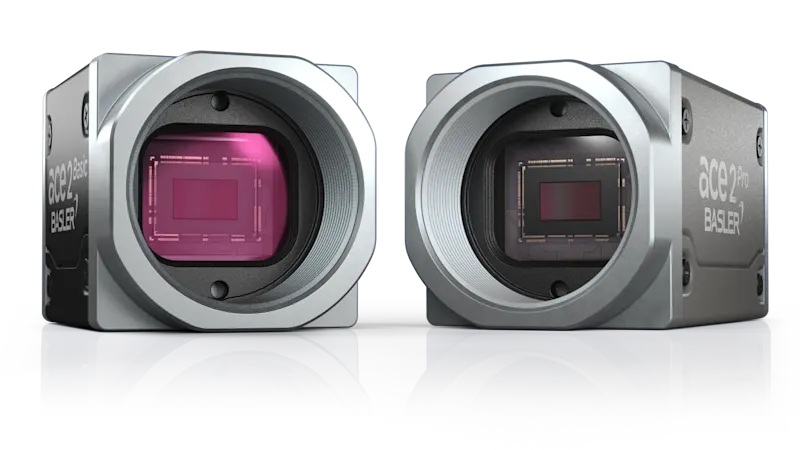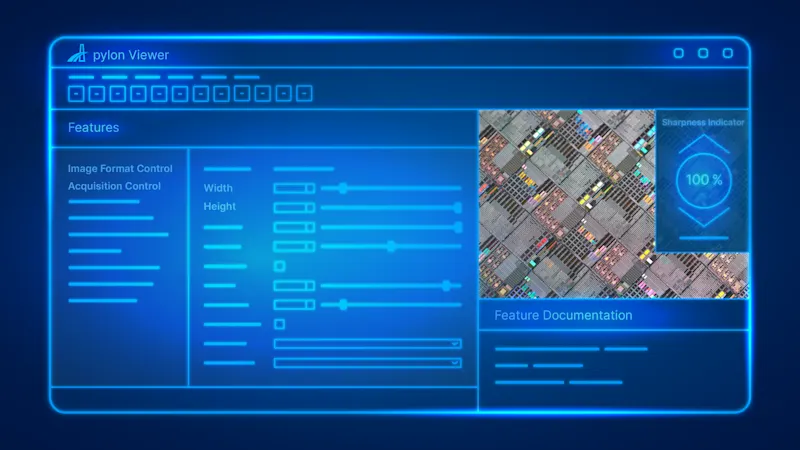Basler ace 2 a2A3536-31umPRO
- IMX676 Sensor
- 31 fps Frame rate
- USB 3.0 Interface
- 12.5 MP Resolution (MP)
- 1/1.6 Sensor Format
The Basler a2A3536-31umPRO USB 3.0 camera with the Sony IMX676 CMOS sensor delivers 31 frames per second at 12.5 MP resolution.
Select Product Line:
General Information
| Manufacturer | Basler |
|---|---|
| Order Number | 109490 |
| Product Family | ace 2 R |
| Product Line | ace 2 R Pro |
| Camera Series | Basler ace 2 |
| Camera Category | Area Scan Camera |
| Warranty | 36 Months |
Sensor
| Sensor Vendor | Sony |
|---|---|
| Sensor | IMX676 |
| Shutter | Rolling Shutter |
| Sensor Format | 1/1.6 |
| Sensor Diagonal | 10 mm |
| Sensor Type | CMOS |
| Sensor Size | 7.1 mm × 7.1 mm |
| Resolution (H x V) | 3536 px × 3536 px |
| Resolution | 12.5 MP |
| Pixel Size (H x V) | 2 μm × 2 μm |
| Frame rate | 31 fpsCalculate individual frame rate |
| Mono/Color | Mono |
| Spectrum | Visible |
EMVA Data
| Quantum Efficiency (typical/minimal) | 91.7 % (typical) |
|---|---|
| Dark Noise (typical/maximal) | 3.7 e¯ (typical) |
| Saturation Capacity (typical/minimal) | 12.2 ke¯ (typical) |
| Dynamic Range (typical/minimal) | 68.4 dB (typical) |
| Signal-to-Noise Ratio (typical/minimal) | 40.5 dB (typical) |
Camera Data
| Interface | USB 3.0 |
|---|---|
| Image Data Interface | USB 3.0, nominal max. 5 Gbit/s (SuperSpeed) |
| Pixel Bit Depth |
|
| Exposure Control |
|
| Digital Input | 1 |
| General Purpose I/O | 2 |
| Power Supply | Via USB 3.0 interface or 12-24 VDC |
| Power Requirements (typical) | 3 W |
Housing
| Housing Type | Box |
|---|---|
| Housing Size (L x W x H) | 42.8 mm x 29 mm x 29 mm |
| Weight | 90 g |
| Lens Mount | C-mount |
| Operating Temperature | -10 °C - 50 °C |
Technical Drawing
Manufacturer
| Basler |
|---|
Conformity
- CE (incl. RoHS)
- EAC
- FCC
- GenICam
- IP30
- KC
- RoHS
- UL
- USB3 Vision
High sensitivity and low noise for low-light & NIR applications
The IMX676 sensor of the Sony STARVIS 2 series is characterized by its high sensitivity – even in the near-infrared (NIR) range – and a high signal-to-noise ratio. This combined with the cheaper rolling shutter sensor technology allows cameras with the IMX676 to offer many benefits for low-light, NIR, and price-sensitive applications.
Quantum efficiency in comparison
The graph shows the quantum efficiency (QE) of three sensors.
IMX676: Rolling shutter sensor, 12.5 MP resolution, pixel size of 2 μm2, latest Sony STARVIS 2 series
IMX226: Rolling shutter sensor, 12.2 MP resolution, pixel size of 1.85 μm2, Sony STARVIS series, available for over 10 years
CMV4000NIR: NIR-optimized global shutter sensor, 4 MP resolution, pixel size of 5.5 μm2, available for over 10 years
Both the QE curves and the table below of selected QE data prove the high sensitivity of the IMX676 sensor in both the visible and NIR range compared to the established sensors.
IMX676 | IMX226 | CMV4000NIR | |
|---|---|---|---|
Technology | Sony STARVIS 2 | Sony STARVIS | NIR-optimized |
QE @ 540 nm | 92 % | 80 % | 62 % |
QE @ 850 nm | ~ 45 % | ~ 19 % | ~ 35 % |
QE @ 950 nm | ~ 20 % | ~ 9 % | ~ 11 % |

High image quality at 850 nm
This image comparison demonstrates the high image quality of the IMX676 sensor in the NIR range. Two images with negative film in the left part of the image (outlined in blue) are shown. Because the negative film is transparent in the NIR range, the scale behind it is clearly visible at 850 nm. The lines of the scale are easily recognizable due to the high NIR sensitivity and the low noise behaviour of the IMX676.
Sony STARVIS 2 sensor technology
The excellent image quality delivered by the IMX676 sensor is due to the ever-evolving sensor technology. The pixel architecture of the Sony STARVIS 2 sensors has been optimized compared with the previous series and convinces with very high sensitivity—even in low light conditions. Further developments continue to improve light absorption in the NIR range, lead to a high signal-to-noise ratio, and extend the dynamic range.
Required software
Features & Documentation
For more information about the features, visit the Documentation
Beyond Features
| Compression Beyond - Patented | Reduce the amount of image data transferred using our patented image compression algorithm and choose between 'lossless' and 'lossy'. |
| Pixel Beyond - Patented | Use our patented Binning process to continuously adjust the sensor pixel to meet your needs. Reduce the amount of data or simulate the characteristics of another sensor. |
Chunks
Color Creation
Event Reporting
I/O Control
Image Acquisition Control
| Acquisition Frame Rate | |
| Acquisition Mode | |
| Acquisition Start, Stop, and Abort | |
| Acquisition Status | |
| Burst Mode | Acquire a sequence of images after triggering once and output them as required. In High-Speed Burst Mode, you can temporarily bypass the data limitation of GigE. |
| Exposure Active Trigger | |
| Exposure End Trigger | |
| Exposure Start Delay | |
| Exposure Start Trigger | |
| Frame Active Trigger | |
| Frame Burst Active Trigger | |
| Frame Burst End Trigger | |
| Frame Burst Start Trigger | |
| Frame End Trigger | |
| Frame Start Trigger | |
| Sensor Readout Time | |
| Triggered Image Acquisition |
Light Control Features
| Intelligent Light Control (SLP) | Control the lighting directly with the camera. By synchronizing the flash mode and adjusting the brightness levels, you can quickly achieve precise lighting conditions and shorten the development time of your application. |
Line Source Signals
Miscellaneous
| Device Information Parameters | |
| Device Temperature | |
| Improvement of Image Quality | Reduce image artifacts caused by environmental influences. Correct individual pixel errors using Defect Pixel Correction. |
| Presettings | Automate recurring steps in your application by using the camera's default settings and/or creating and saving your own presets. |
| Sensor Bit Depth | |
| Sensor State | |
| Temperature State | |
| User-Defined Values |
PGI
| Denoising | |
| PGI - Patented | Use the complete image enhancement package or choose from Denoising, Sharpness, Debayering, and Color-Anti-Aliasing to adjust the image quality. |
Standard Features
| Auto Function Profile | |
| Auto Functions | Use the camera's auto functions to allow the camera to find the optimum settings for exposure time, gain, and white balance, for example. This simplifies camera integration into your application. |
| Binning | |
| Center X and Center Y | |
| Counter | |
| Digital Shift | |
| Exposure Auto | |
| Exposure Mode: Timed | |
| Exposure Mode: Trigger Controlled | |
| Exposure Mode: Trigger Width | |
| Exposure Time | |
| Gain | |
| Gamma Correction | |
| Image Adjustment | Adjust pixel values losslessly with Black Level, Digital Shift, and other standard features. |
| Image ROI (Region of Interest) | |
| Lookup Table (LUT) | |
| Multiple ROI | |
| Reverse X (Horizontal Mirroring) | |
| Reverse Y (Vertical Mirroring) | |
| Sequencer (ace 2 and boost R) | |
| Test Patterns | |
| Timer |
Suitable Products
Required software

All Basler ace 2 Models
Haven't found the right model? See the product list for an overview of all ace 2 models. Find the right product for your application: filter by sensor, resolution, frame rate, and more.




